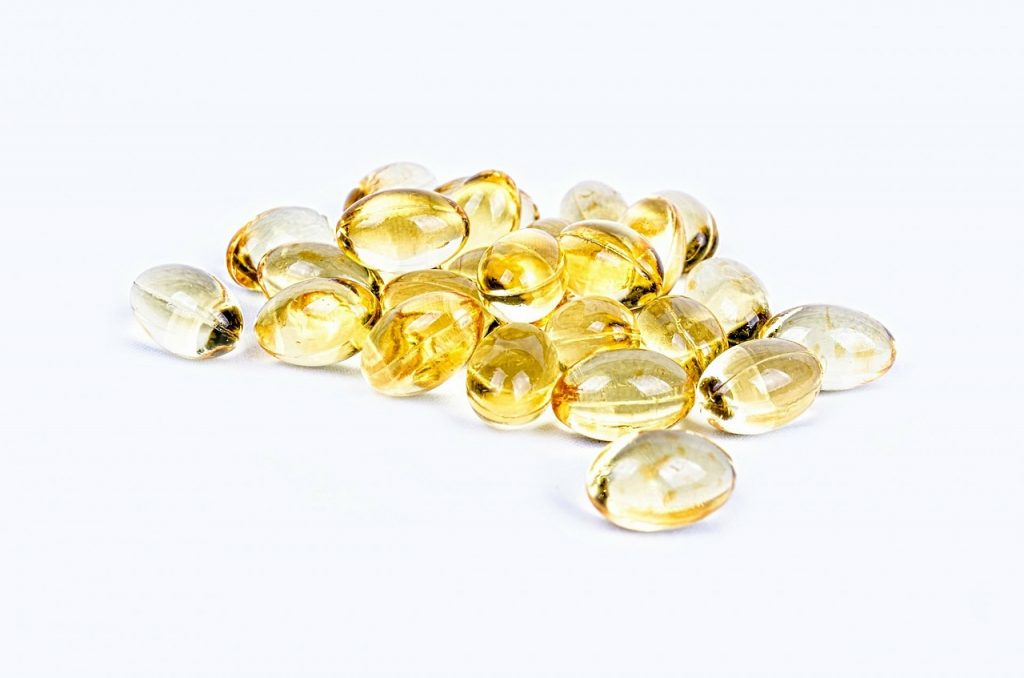 The current recommendation is for adults to consume 2000 IU of vitamin D per day when adequate sunlight exposure is not available. The amount of vitamin D obtainable from direct sunlight may be in the tens of thousands of IU per day, and is far higher than can be obtained from diet. Diet is a poor source of vitamin D as the foods that contain vitamin D in high concentrations (such as fish oils, liver and egg yolks) are not often consumed by most humans. Therefore, the current recommendation to consume vitamin D as supplements during periods of prolonged sun absence, for example during the winter months. However, while this is a reasonable strategy for adults, and even adolescents and children, young infants are reliant on their milk for their vitamin D and for this reasons the diet of the mother is an important consideration. Studies have therefore investigated the effects of supplements to breastfeeding mothers on the vitamin D content of breast milk.
The current recommendation is for adults to consume 2000 IU of vitamin D per day when adequate sunlight exposure is not available. The amount of vitamin D obtainable from direct sunlight may be in the tens of thousands of IU per day, and is far higher than can be obtained from diet. Diet is a poor source of vitamin D as the foods that contain vitamin D in high concentrations (such as fish oils, liver and egg yolks) are not often consumed by most humans. Therefore, the current recommendation to consume vitamin D as supplements during periods of prolonged sun absence, for example during the winter months. However, while this is a reasonable strategy for adults, and even adolescents and children, young infants are reliant on their milk for their vitamin D and for this reasons the diet of the mother is an important consideration. Studies have therefore investigated the effects of supplements to breastfeeding mothers on the vitamin D content of breast milk.

The current recommendation is to consume 2000 IU of vitamin D per day in the absence of strong sunlight exposure. Evidence suggests that this level of supplementation is high enough to increase the vitamin D content of breast milk in breastfeeding mothers. However, 1000 IU per day does not raise vitamin D levels of breastmilk any higher than consuming no vitamin D. Good food sources of vitamin D include fish oils, liver and egg yolk. As these foods are not often consumed, supplements are a more reliable method of obtaining adequate vitamin D. It is also questionable as to whether food would be able to regularly supply 2000 IU of vitamin D per day.
For example, in one study, pregnant women received either a placebo, 1000 IU of vitamin D or 2000 IU of vitamin D. The women then gave samples of breast milk at 2 week postpartum and ar 2 month postpartum. The results of the study showed that at 2 weeks the vitamin D activity of the breast milk of those women receiving 2000 IU of vitamin D per day was significantly higher than those women receiving the 1000 IU dose of vitamin D and the placebo (74 IU/L for the 2000 IU group; 51 IU/L for the 1000 IU group and 52 IU/L in the placebo group). At 2 months the vitamin D activity in the breast milk of the 2000 IU group was 58 IU/L, whereas it was only 43 and 45 in the 1000 IU group and placebo group, respectively. Therefore supplements during pregnancy and breastfeeding are an effective way to increase the vitamin D supplied to a breastfeeding infant. The non-significant difference between the placebo and the 1000 IU group supports the recommendation for consuming 2000 IU per day of vitamin D as a supplement.
Eat Well, Stay Healthy, Protect Yourself
RdB
